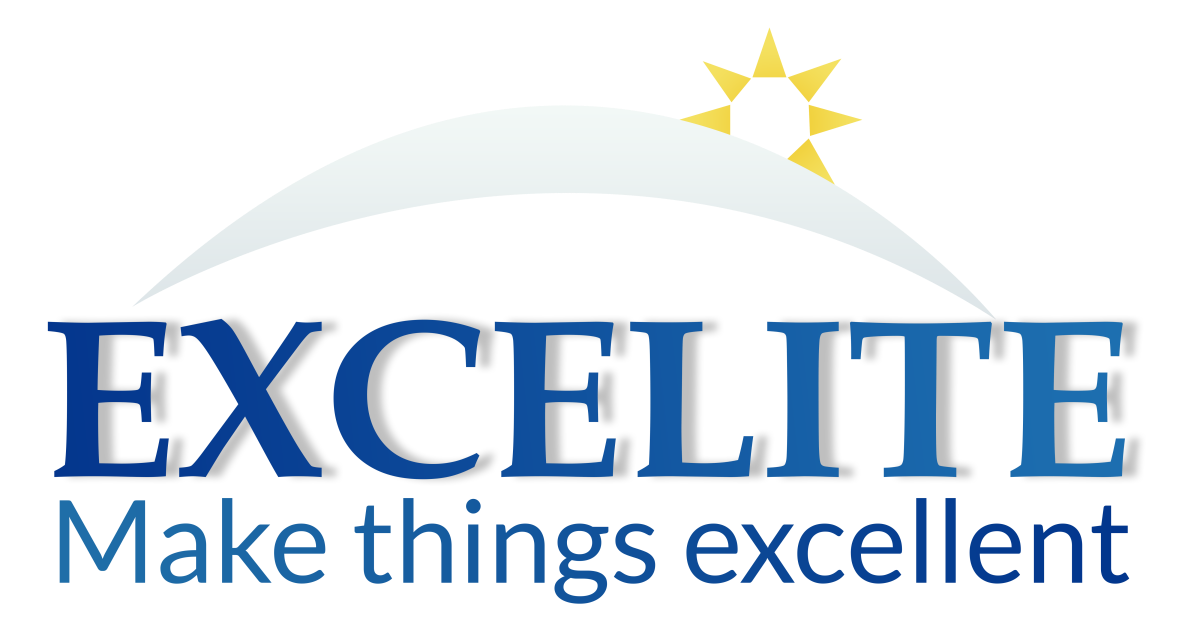Designing Flame-Resistant and Curved Polycarbonate Sheet Roofing
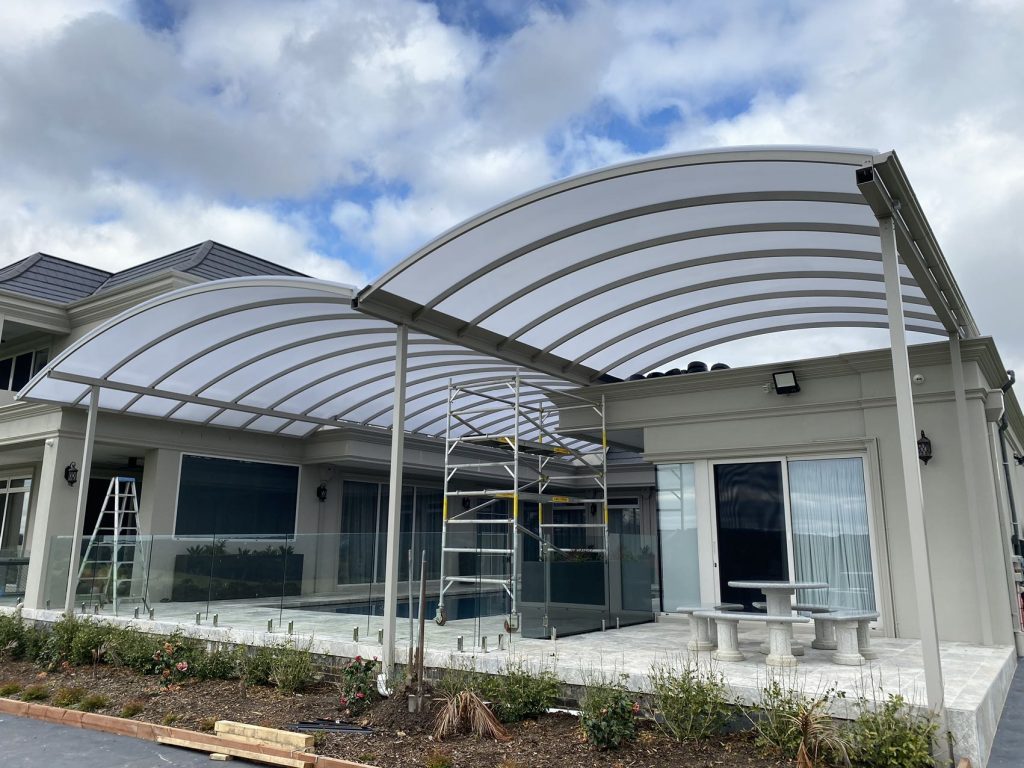
What is the curve polycarbonate roofing?
The application of polycarbonate sheets in roofing has seen a significant growth in recent years, with a rising demand for curve roofing polycarbonate sheets designs that offer both aesthetic appeal and structural innovation. Homeowners and commercial builders are increasingly drawn to the sleek and modern look of curved polycarbonate roofs, which add a touch of sophistication to any architectural design. In addition to the visual impact, ensuring fire safety has become a top priority in construction projects, leading to a growing requirement for flame-retardant polycarbonate sheets.
Having the knowledge and expertise to bend polycarbonate sheets effectively is crucial in meeting the dual objectives of creating visually striking curved polycarbonate roofs while maintaining the highest standards of fire safety in residential and commercial buildings.
Flame resistant sheets under UL94 V0 flammability testing
In this blog, we’ll cover all the details everything you need to know of bending polycarbonate sheet with flame resistant polycarbonate sheets.
- Polycarbonate flame resistant sheets under UL 94 V0 flammability testing.
- Everything you want to know about bend polycarbonate sheets.
Polycarbonate sheet has durability, UV resistance, and flexibility advantages. It is a versatile and reliable material for a wide range of applications in constructions. But standard polycarbonate sheets are not naturally flame-retardant and can be a fire hazard if not treated or manufactured with flame-retardant additives. Excelite provides the high flame resistant polycarbonate sheets which meets the UL94 V0 flammability request. These flame-retardant polycarbonate sheets are specifically designed to meet fire safety regulations and standards, making them suitable for applications where fire resistance is a critical requirement.
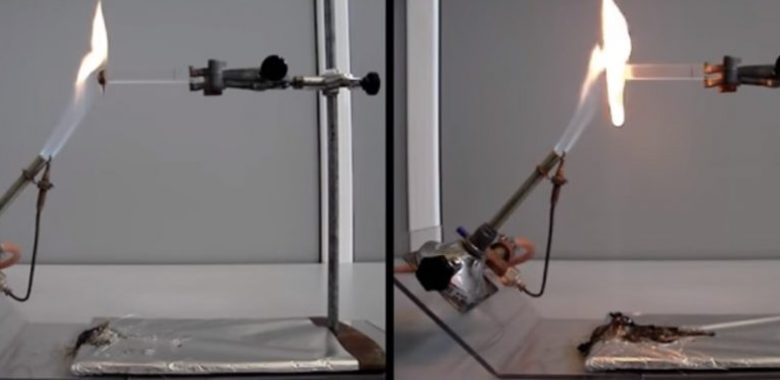
UL Rated Building Material
The Underwriters Laboratories (UL) is an independent, non-profit testing laboratory. Through UL’s testing methods, it validates and certifies a manufacturer’s claims about its product’s performance. Fire, smoke and flammability testing is one of its many diagnostic services.
UL 94 Flammability Rated Polycarbonate:
There are six different flammability ratings under UL 94: 5VA, 5VB, V-0, V-1, V-2 and HB.
The Horizontal Burn (HB) rating is the lowest of the UL 94 ratings and indicates the material as self-extinguishing.
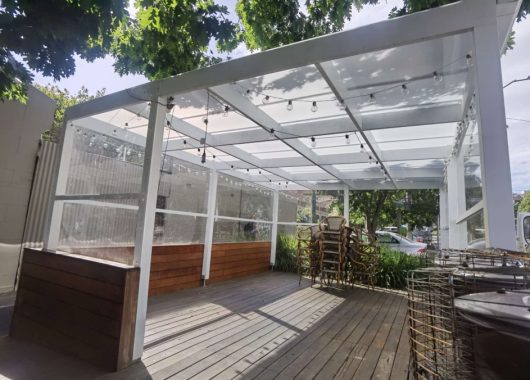
When bending polycarbonate sheets for roofing or other applications
What types of polycarbonate sheets can be curved?
- Solid flat polycarbonate sheets
- Twin wall polycarbonate sheets
- Corrugated polycarbonate sheets
- Corrugated embossed polycarbonate sheets
All types of polycarbonate sheets possess flexibility, allowing them to be curved to some degree without cracking or breaking. However, the ease and extent to which they can be curved without heating or altering their structural integrity vary among different types. Furthermore, when choosing materials, be sure to pay attention to the selection of PC material rather than acrylic, plexiglass. Acrylic above 2mm or 3mm can no longer be bent and is easy to break.
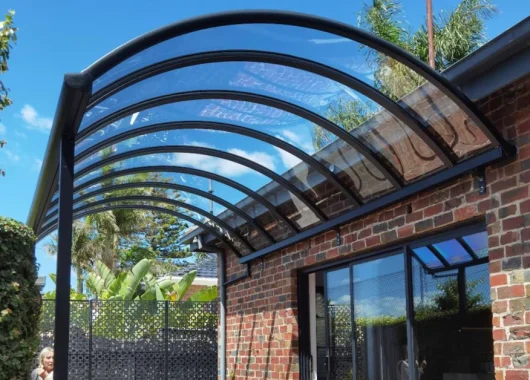
What is the desired angle or curvature of the bend?
Determine the specific angle or curvature needed for the different types of polycarbonate sheet to fit the roofing design.
All most all of above material can be bent, but there are different polycarbonate sheet bending radius.
Polycarbonate solid sheets allow for easy bending to achieve curved radii, making them suitable for a wide range of projects such as bike shelters, bus shelters, smoking shelters, and children’s play areas. Solid polycarbonate sheets are resistant to breakage and providing long-lasting protection and safety. It is about 250 times stronger than glass of the same thickness.
Excelite polycarbonate roofing sheets provide a convenient and customizable solution for roofing projects. Available in rolls, these sheets provide a continuous length that can be cut to meet specific dimensions and requirements. The width can be adjusted to match the rafter distance.
Multi wall or Twin wall polycarbonate sheets’ bending radius suggestion.
-Polycarbonate hollow sheet should only be bent following the interior ribs. Don’t try to bend the sheets going against the ribs.
-Determine the bending radius of the curved frame.
-Choose the right suitable polycarbonate sheet thickness.
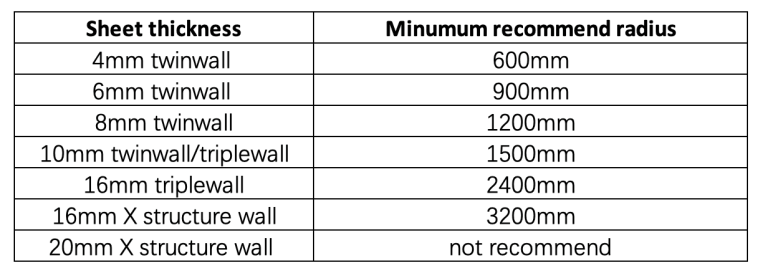
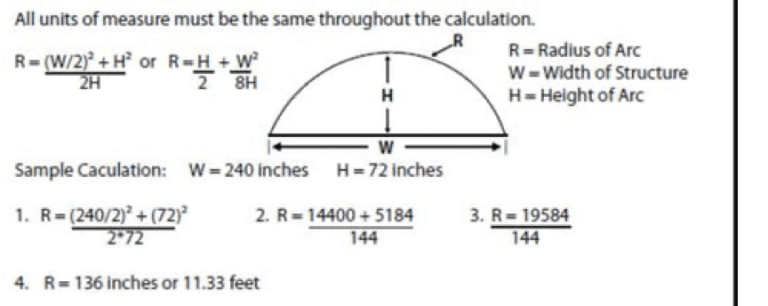
The structure also makes twin wall sheets more popular for use on greenhouses. Polytunnels and similar structures due to the thermal insulating qualities which ensure the inside of the structure stays warm.
How to bend the polycarbonate corrugated sheets?
Corrugated polycarbonate sheet is the easiest material to bend due to its thinner and flexible advantages. Normally, the polycarbonate corrugated sheets is 0.8mm and 1.2mm thickness for the polycarbonate roofing. One more important thing, corrugated sheets can only be curved easily across the width of the sheet direction due to the corrugated profile. You can’t bend the length way.
Corrugated polycarbonate sheets are preferred in outdoor applications like gardens, cold frames, and farming. Their distinctive ripple effect offers aesthetically pleasing designs, making them a popular choice for various projects.
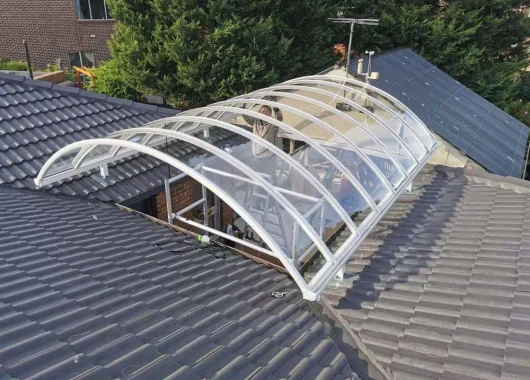
Types of Bending Curve Polycarbonate Sheets
There are two primary methods for bending or curving polycarbonate sheets: heat bending and cold bending.
Heat Bending
Heat bending is typically used for bending polycarbonate sheets around sharp corners or tight curves.
In heat bending, the polycarbonate sheet is heated to a specific temperature using a heat source, such as a heat gun or oven. Once the sheet reaches the desired temperature, it is shaped around a mold or form to achieve the desired radius.
But in here, we mainly talk about the cold bending which applied in polycarbonate roofings.
Cold Bending
Cold bending is ideal for bending polycarbonate sheets along shallow curves, such as in roofing applications.
Cold bending is convenient for on-site use, does not require heating equipment, and allows for easy readjustment. It is particularly suitable for following pre-curved roof structures to enhance aesthetics and rigidity.
Thinner polycarbonate sheets, lower than 4mm thickness can achieve tighter curves with cold bending, and it eliminates the risks associated with heat bending, such as overheating and potential material damage.
TAILORED POLYCARBONATE SOLUTION
Get a Quote Today
Looking to transform your vision into a tangible product?
At Excelite Plastics, we understand that every project is unique.
